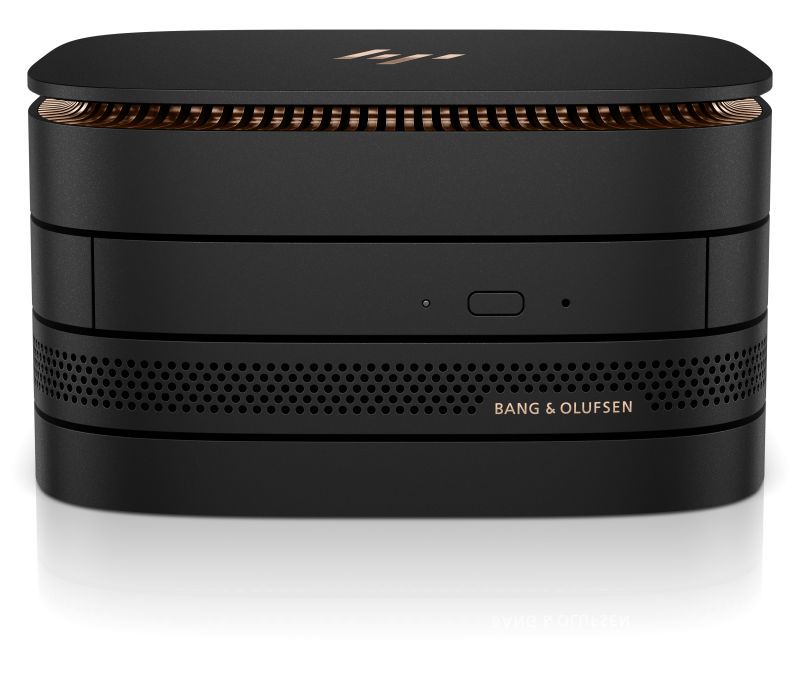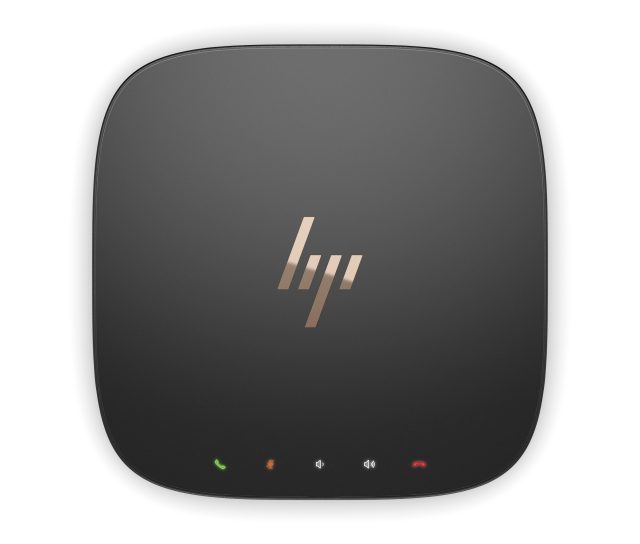
HP has announced today two new desktop PCs, both with some unusual form factors, in what it calls the "desktop reinvention." While laptops and all-in-ones have a long history of novel designs and advanced engineering, the traditional desktop has tended to be a rather less exciting category. Some systems have shrunk to take advantage of the increasing integration and decreasing power requirements that modern processors boast, but the plain-old mini-tower PC, still a corporate staple, has had little thought or attention given to its design over the years.
The HP Elite Slice is a corporate-oriented machine designed to be modular, taking advantage of USB Type-C for power and I/O. The base unit houses the actual PC in a unit measuring 6.5-inches square, and 1.4-inches tall. This houses all the major PC components—processor up to a 35W Core i7-6700T, RAM up to 32GB, storage up to 512GB NVMe, gigabit Ethernet, 802.11ac Wi-Fi—and a handful of ports. There's a USB Type-C for power, a second USB Type-C that also supports DisplayPort alternate modes, two USB Type-A, one DisplayPort, and one HDMI. Optionally, the side of the unit can sport a fingerprint reader.
The top cover of the main unit is modular, though not end-user changeable. As well as a plain cover, the main unit can have a wireless charging cover, so you can recharge your phone just by setting it on top of your PC; or it can have what HP calls the "collaboration cover," which contains a set of buttons (start/end call, volume up/down, and so on) for controlling a software phone such as Skype for Business.

The bottom of the unit contains a special connector, which is comparable to USB Type-C, and a locking mechanism. It's through this connector that additional modules can be stacked. HP has two modules, an audio module that includes speakers and a microphone array and an optical drive module. In a demonstration the audio module surprised us; not only was its stereo separation far better than we would have expected from a 6.5-inch box, the microphones were also able to pick up voices from a distance of several meters. Combined with the collaboration cover, this would make the Elite Slice a convenient conferencing system for small- to medium-sized meeting rooms. These modules daisy-chain onto the bottom of the main PC module, passing through their power and data using the special connector. The bottom of the system can also be swapped out with a VESA plate so that the whole stack can be mounted on standard VESA mounts.

The neatest way to use the Elite Slice is with a USB Type-C monitor, and HP is releasing one, the 2560×1440 HP EliteDisplay S240uj, too. With this, the Elite Slice needs just a single cable, the Type-C cable between it and the monitor, over which all its power and video data can flow. The monitor's base also includes wireless charging, so you can just plop your phone down on it to charge it while you work.
The Elite Slice should become available later this month, starting at $699. The monitor will be $429 and should go on sale in October.
For the home, HP has the fabric-covered Pavilion Wave. This good-looking machine combines a PC and a speaker in a 10.3-inch-tall triangular box. Spec-wise it's not dissimilar to the Elite Slice; a 35W processor, up to an i7, up to 16GB RAM, with up to 1TB solid state or 2TB spinning disk storage. As an option, the system can be specced with an AMD R9 M470 discrete GPU. While this won't make it a gaming powerhouse, it should make it perform respectably in Dota 2. Even without the discrete GPU, the system can drive two 4K monitors.
On the front there's a USB 3 Type-A port and a headset jack. Around the back it has gigabit Ethernet, two more USB 3 Type-A ports, one USB Type-C port, 802.11ac Wi-Fi, DisplayPort, and HDMI.

As well as a speaker, the Wave also includes a microphone array so that you can shout at Cortana from across the room.
Pricing starts at $530, with availability from later this month.
reader comments
78